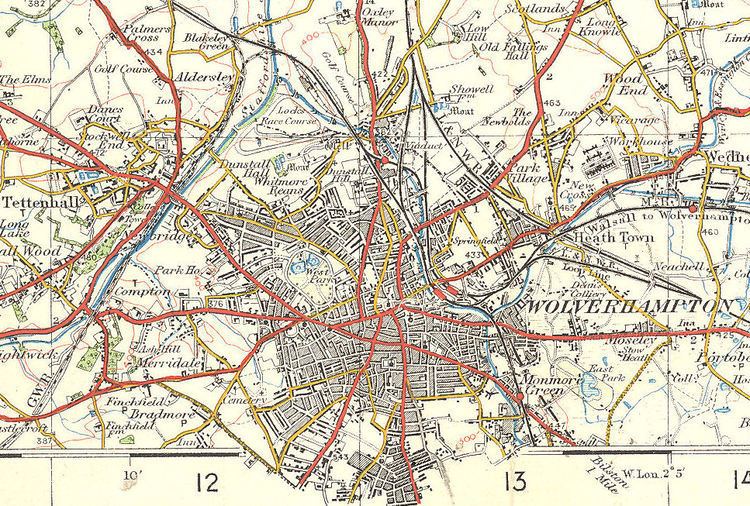Type Local Government Region served City of Wolverhampton | Headquarters Civic Centre | |
 | ||
Location St. Peter's Square, Wolverhampton, England Leader Councillor Roger Lawerence Mayor Councillor Barry Findlay | ||
City of Wolverhampton Council is the governing body of the City of Wolverhampton, England.
Contents
The council offices are located in the Civic Centre, which is located in St. Peter's Square in the city centre.
The Labour Party currently control the council and have been in majority on the council since 1974, with the exceptions of 1978–1979, 1987, 1992–1994 and 2008–2010.
Councillor Deputy Barry Findlay of the Conservatives is the city's Mayor 2016–17 municipal year, with his Deputy who will take on the role for 2017–18 being Councillor Elias Mattu of Labour Party. Visit the Mayor of City of Wolverhampton's website here
The Council's Head of Paid Service, Keith Ireland, serves as the Council's Managing Director and chairs the Authority's Strategic Executive Board of Directors comprising Tim Johnson(Strategic Director of Place); Linda Sanders(Strategic Director of People); Kevin O'Keefe (Director of Governance, Monitoring Officer and Solicitor to the City Council); Mark Taylor (Director of Finance and Section 151 Officer) and Julien Kramer (Director of Education).
City of Wolverhampton Council was assessed in 2007 by the Audit Commission and judged to be "improving well" in providing services for local people; this rating was given to 59% of local authorities. Overall, the council was awarded "three star" status meaning it was "performing well" and "consistently above minimum requirements", similar to 46% of all local authorities. It was noted that it was rated as "good" for children's and young people's services; whilst the Supporting People programme was judged to be "poor".
The Council's housing stock is managed by Wolverhampton Homes.
Wards
There are 20 wards of City of Wolverhampton Council:
A map showing the ward boundaries is available.
History
Wolverhampton gained the beginnings of modern local government in 1777, when the Wolverhampton Improvement Act was passed by Parliament. This allowed for the establishment of 125 Town Commissioners who undertook a variety of local improvement work such as punishing bear baiting, improving drainage, widening streets and by the end of the century street lighting had been provided at every street corner and over the doorway of every inn, and water supply had been improved by the sinking of ten new wells and the provision of a great water tank in the market place. Policing had been improved with the appointment of ten watchmen and attempts were also made to regulate the markets and inspect hazardous food.
Wolverhampton was incorporated as a municipal borough in 1849 under the Municipal Corporations Act 1835. The town was then made a County Borough in 1889 under the Local Government Act 1888.
In 1933, the boundaries of the borough expanded, taking in areas from Cannock Rural District and Seisdon Rural District, with very little of the surrounding urban area being affected, with only Heath Town Urban District being abolished.
The bulk of the urban districts of Bilston (a borough itself after 1933), Tettenhall and Wednesfield were added to the borough in 1966, along with the northern section of the urban district of Coseley and parts from the north of Sedgley and the west of Willenhall. The vast majority of these areas were traditionally part of the Parish of Wolverhampton, and were part of the original Parliamentary Borough.
Wolverhampton was one of only two County Boroughs (the other being Liverpool) to have no changes made to the boundary during the 1974 reorganisation of local government, the borough already having a population larger than the 250,000 required for education authorities. This contrasted with both the Redcliffe-Maud Report, and the initial White Paper for the 1974 reforms where large areas of the present South Staffordshire district were to be added to the borough. During the 1974 reforms it was placed within the West Midlands Metropolitan County.
Coat of arms
The coat of arms of City of Wolverhampton Council was granted on 31 December 1898, on the occasion of the 50th anniversary of the foundation of the council.
The various symbols within the arms are representative of the history of the city. The book represents the education within the city, specifically the 16th century Wolverhampton Grammar School; the woolpack represents the mediaeval woollen trade within the city; the column is a representation of the Saxon pillar that can be found within the churchyard of St. Peter's Collegiate Church in the city centre; whilst the keys are representative of the church itself and its dedication to St. Peter. The padlock represents one of the major industries of the area at the time of the granting of the arms – that of lock-making; whilst the brazier at the top is indicative of the general metal-working industries in the area. The cross is ascribed to King Edgar.
The motto on the coat of arms is 'Out of Darkness Cometh Light'.
Prior to 1898 there was a former coat of arms that had been in use since 1848, though these arms were never officially granted.
